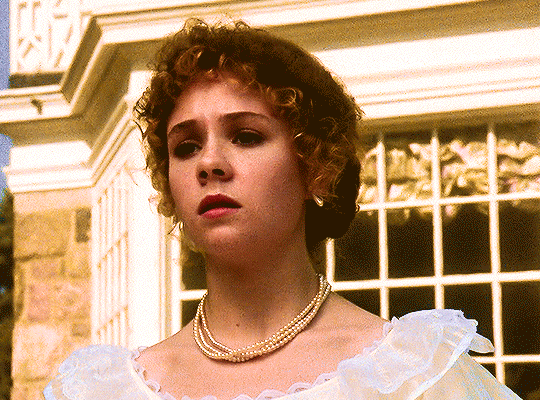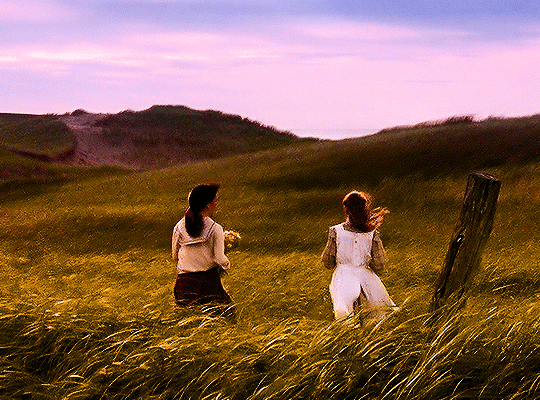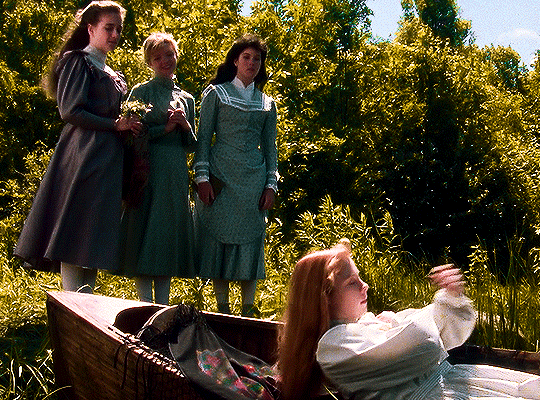#thank you to christine for the quality file so i can edit this<3
Photo







As Rachel Lynde used to say, the sun will go on rising and setting whether I fail in Geometry or not. I think I'd rather it didn't go on if I failed.
Anne of Green Gables (1985) dir. Kevin Sullivan
#aoggedit#anne of green gables#filmgifs#filmedit#perioddramaedit#periodedit#usersteen#usersugar#userpavlova#ceremonial#dailyshirbert#chewieblog#80sedit#80sdaily#cinemapix#fyeahmovies#dailyflicks#userrizz#by leah#thank you to christine for the quality file so i can edit this<3
2K notes
·
View notes
Text
The Body Positivity Movement
Or the Ashley Graham Effect.
Recently, Ashely Graham went undercover on Undercover Boss: Celebrity Edition, in order to help out some deserving people she’d found through social media that were plus sized and wanted to be models, run non-profits and do dance. And I’ll be honest, I don’t watch a lot of Undercover Boss, in fact the last one I watched was the Bridal Store episode, you know, the Bridal chain that has subsequently filed for bankruptcy and gone out of business. Most of the episodes don’t interest me.
Watching Ashley Graham go undercover into the fashion world was a cringe worthy experience. She knew what she was getting into. She knew exactly what she was getting into and she still (hopefully mostly for the cameras) got a bit cheesed off. I admire her grit and tenacity and applaud what she’s doing, even if it’s a big disingenuous for her to be going on something titled “Undercover Boss.” Because the open call she went to at the model agency, she didn’t own that modelling agency. She couldn’t walk back in and rip that guy with the European accent a new one about representation and that’s not the way we do things here. Not in 2018.
Ashley Graham is at most a major influencer (she’s been on Top Model, they’ve made her into a Barbie and so on.) The most that showing that on National Television will do is hopefully shame that agency into rethinking their policies. Because that agency and that policy of not hiring plus sized models is the normal and not the exception.
Being a “body positive” or “body inclusive” company has been more of a marketing campaign for a long time. (Does anyone else remember that Dove soap campaign?) Rather than companies trying to honestly and realistically include and embrace a large group of people as their customers. Instead, they’ve been focusing on the small side of dead center. (Petite being another major ignored group of people. And if you’re plus sized and petite, yeah, um, you don’t exist to the fashion world.)
It’s hard for me to take this “movement” seriously when I get texts from my best friend about not being able to find clothes that fit at popular middle priced chain stores. I see it as a gimmick when it only brings up “embracing” every size instead of also pointing out there may be underlying causes to “every size” such as PCOS. When I know the reasons that brands aren’t “inclusive” because of numbers on a spread sheet.
The biggest cringe is that this has been going on for decades, in fact, we’re getting close to 50 years since Twiggy became a popular super model and changed the way designers and magazines thought about how fashion was presented on the runway and in fashion images. This isn’t the first time that the idea that designers don’t know how to work with normal or plus sized people has been exposed on public television. It’s been shown repeatedly on Project Runway and all other fashion programs like it. It’s been going on in America’s Next Top Model. And we’re finally, after over a decade of this, making some headway that models being 5 foot 11 and a standard size 6 is not healthy.
(I’m 5’2” and a standard size 4 on top and a 6 on bottom and let me tell you, I don’t always feel healthy! I’ve been mistaken for a model plenty of times and I go, “uh, I’m 5’2”, far too short. Sorry.)
My first real experience with this that sank in was over a decade ago now when I went to the Academy of Art and took my second Fashion Business class. (I had one at Bluffton Uni and it wasn’t named the same thing so I had to waste 3 hours of credit time and take it again.) Bluffton was a Mennonite small country college. Most the girls there were from Middle Class Christian Homes. (Yes, that’s all caps.) Going to the Academy, I met a completely different class of people. We were asked 2 questions that stuck out to me. One was “What is the STANDARD average size of the American consumer?” And the second was “Does anyone know what NASCAR is?” (This was around Cars so there was and wasn’t an excuse.) I knew the answer, second class after all (the first class at least wasn’t so far off in guesses,) the other girls didn’t and they didn’t know what NASCAR was either. The answer, over a decade ago was a standard size 12, btw. We are probably up to a standard size 16 for average, maybe an 18.
Marilyn Monroe was a standard size 12. I’m talking US standard 34, 27, 36 Bust, Waist, Hips in INCHES. (That’s 97, 69, 93 for you metric people.) The US does their sizing by 5cm increments, Europe by 4 to 6cm increments. But regular people don’t really fit these pretty measurements. They’re usually bigger on bottom than they are on top and thus a different size. (Despite all sizing done for brands being done to your BUST measurement. Funsies huh.)
Being from an upper middle class home in the middle of Upstate New York where the only more “country” you can get is to either a) live in a trailer park or b) live in the middle of nowhere. I was the ONLY one in that class to know what NASCAR was because that was Sunday afternoon for most my neighbors and my father’s friends. (And football, let’s not forget football. Then there’s hunting, snowmobiling and… fishing.)
My point is that a lot of fashion students and many fashion designers have no clue at all about the average American consumer and fashion programs are not engineered, designed or even remotely plugged into educating designers on how to design clothes for the “average” market. Despite the lip service to “average” size in my fashion business class. (Blocks were made to standard size 8, probably would have to redo them for size 6 later. Croqui fashion sketches were 9 heads tall and very thin with broad shoulders and no hips.) They’re isolated either by income class or being so down the rabbit hole of fashion magazines and imagery, they’ve lost sight of our Wal-Mart and Target standard consumer if they knew it to begin with! (Oh, Paris Hilton.) And if you want to see this in action watch any episode of Project Runway that involves “real women” and prepare to whimper or scream at the television.
People like Christine Hunsicker who started Gwynnie Bee that has clothes from size 10 to 32 (and now 0 to 32) are rare in the fashion industry. She’s fulfilling a niche that is grossly under served. Seeing her on PR: Fashion Startup was a breath of fresh air. When Project Runway put models of all sizes into the program, it was overdue! (Thank you Tim Gunn!) And the reactions to All Stars that was filmed at the same time, aired after that model inclusive normal seasons and didn’t have models of all sizes was telling. Viewers wanted to know why Project Runway looked like they were taking a step backwards.
Which was great, it was really great to see that reaction. It was amazing to see how much the audiences loved the different sized models.
(PR:AS weren’t, it’s just television fantasy that made them think that because of how filming a show works. No one at Project Runway was certain how the all sizes of models was going to work out with general audiences. They wanted a test run to see how ratings would do. Now, it's moving back to Bravo with the original producers for 2019. Fingers crossed!)
Back in the 1950s, when Marilyn Monroe was popular, fashion models were closer to Victoria Secret sized models than Twiggy (of late 1960s and of the 1970s fame.) Yes, the styles of the 50s did emphasize larger proportions more if not balanced correctly. But everyone wanted to be size 12 and have curves. And yeah, this is coming back and it’s a good thing. Being healthy, having realistic proportions, less photoshopping, less unrealistic expectations on both girls and boys. I am down with that.
The sad part is now, 50 years later, size 12, yes, TWELVE is considered “plus size” and thus, an entirely different fashion market than regular clothes. (Though some of this is due to vanity sizing and not standard sizing.) Many brands don’t want to go into plus sized clothing because it’s a huge material expense, despite the fact that if they provided cute, fashionable clothes to the plus sized market at a decent quality, they’d have a huge customer base.
(Clothing quality is going to be another blog post sometime. I hear this complaint a lot.)
Designers are going to have to be retrained. Design programs are going to have to be changed. Fashion drawing is going to have to be adjusted. Thinking that models are walking hangars that clothes are ‘displayed’ on is a mindset that’s going to have to go.
Runways were originally displays for buyers to see how the clothes would look on real people, real consumers. The ones that shopped at their stores. (So, you see now how attitudes like those of the CEO of Aeropostale and Abercrombie & Fitch started.)
I’m happy for the people Ashley Graham helped. I’m glad that we have models like Ashley Graham and that we have things such as Full Figured Fashion Week. I’ll be even happier when we stop making these false dichotomies and embrace every one of every size and don’t have “ideal looks/customers” related to size and skin color and just have “customers.” When models of all shapes, sizes and skin tones walk down every catwalk and we see it as normal that’s probably a fashion utopia.
Because right now it still feels like a marketing gimmick and that is beyond sad.
0 notes